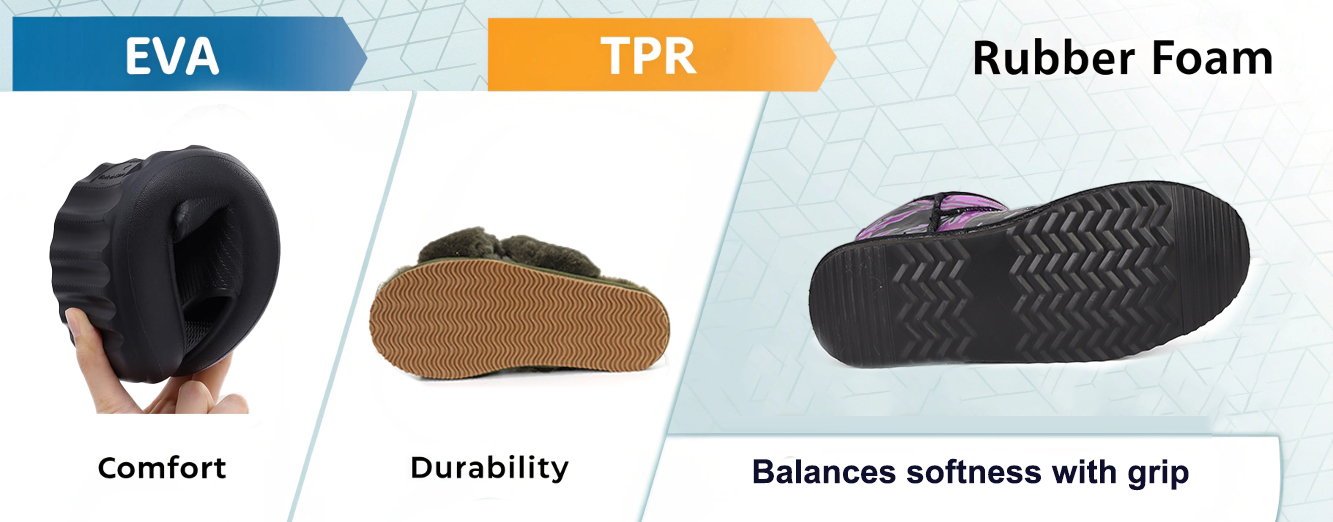
Choosing the right sole for your slipper design feels overwhelming—EVA1, TPR2, PVC3…what do they all mean? Don’t worry. I’ll break it down in plain language.
The most common slipper sole materials are EVA, TPR, rubber4, and PVC. Each has different benefits in comfort, flexibility, durability, and price. Choosing the right one depends on your design, budget, and market.
When I first started working with slipper buyers, many of them were confused by technical terms from factories. So, I created this guide to help them (and you) make clear decisions without getting lost in the jargon.
[Table of Contents]
What is EVA, and why do so many slippers use it?
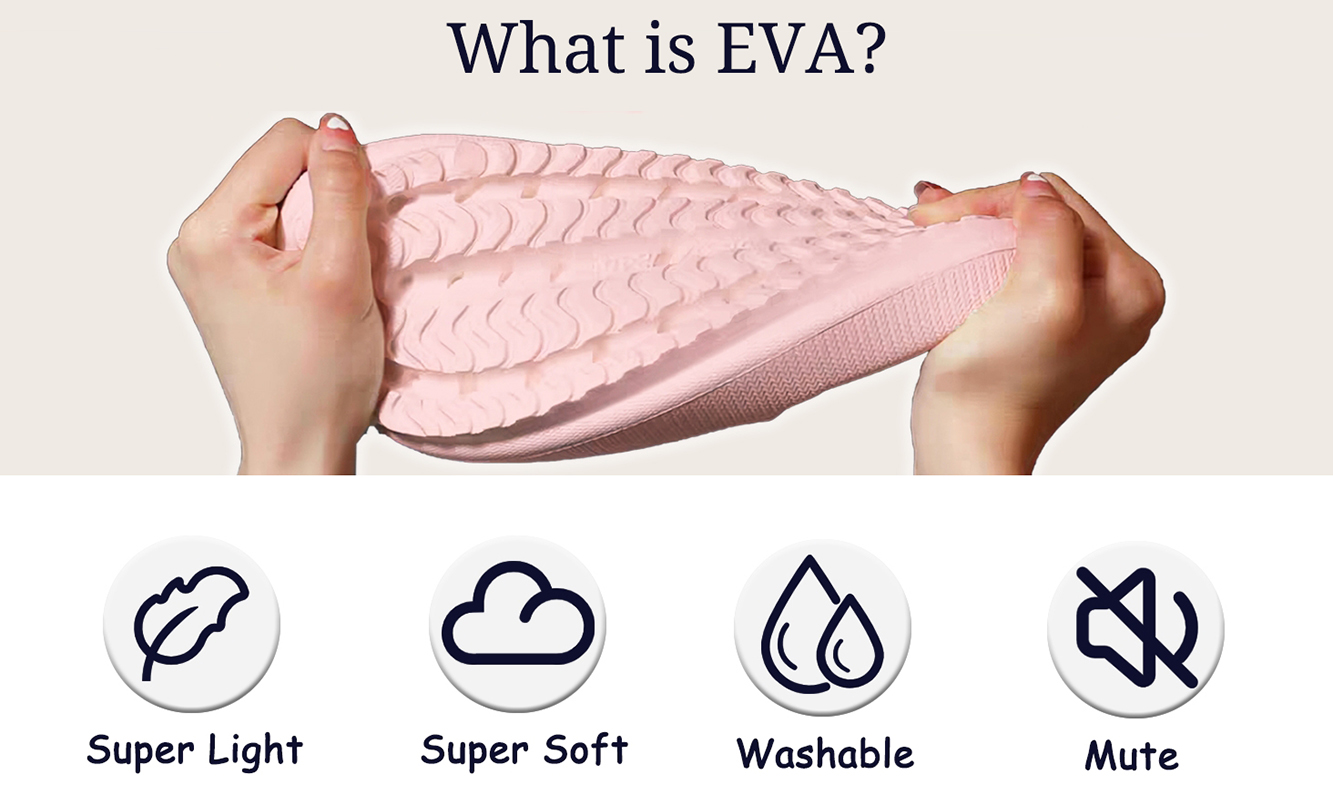
Many of my clients ask about EVA first, because they see it everywhere.
EVA (Ethylene Vinyl Acetate)1 is a soft, lightweight, and flexible sole material. It’s great for indoor slippers because it’s comfortable and low-cost.
EVA is one of the most common sole materials for indoor slippers. It’s soft under your feet and absorbs shock well. That makes it ideal for home use. It's also very lightweight, which keeps shipping costs lower—a big deal for online brands.
But EVA soles wear out faster than rubber or TPR. They're not good for outdoor use or long walks.
| Feature | EVA Sole |
|---|---|
| Comfort | Very soft |
| Weight | Ultra-lightweight |
| Flexibility | High |
| Durability | Low |
| Cost | Low |
If your brand sells cozy, at-home slippers, EVA is a strong choice.
How is TPR different from EVA?
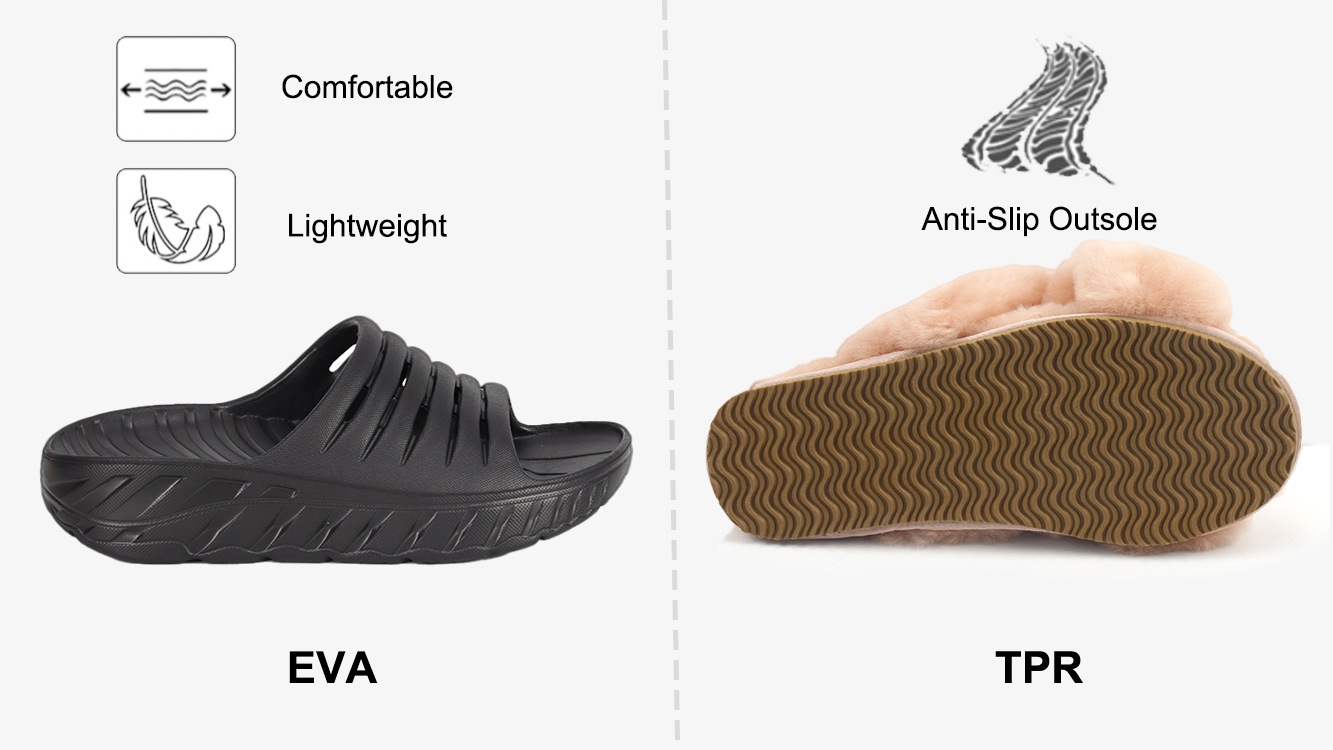
If EVA is for comfort, TPR2 is more about structure.
TPR (Thermoplastic Rubber)2 is flexible like rubber but tougher than EVA. It’s great for slippers that need better grip or might be worn outdoors.
TPR feels firmer and heavier than EVA. It adds structure to a slipper, which helps it hold shape over time. It also has better anti-slip performance—important for brands selling to older adults or customers in colder climates.
TPR costs more than EVA, but many brands find the trade-off worth it. For instance, one of my clients who targets a Japanese market switched to TPR to improve slipper safety and customer satisfaction.
| Feature | TPR Sole |
|---|---|
| Comfort | Moderate |
| Weight | Medium |
| Flexibility | Medium |
| Durability | Good |
| Cost | Medium |
If you want better grip and structure, TPR might be your best bet.
When should I consider using rubber soles?
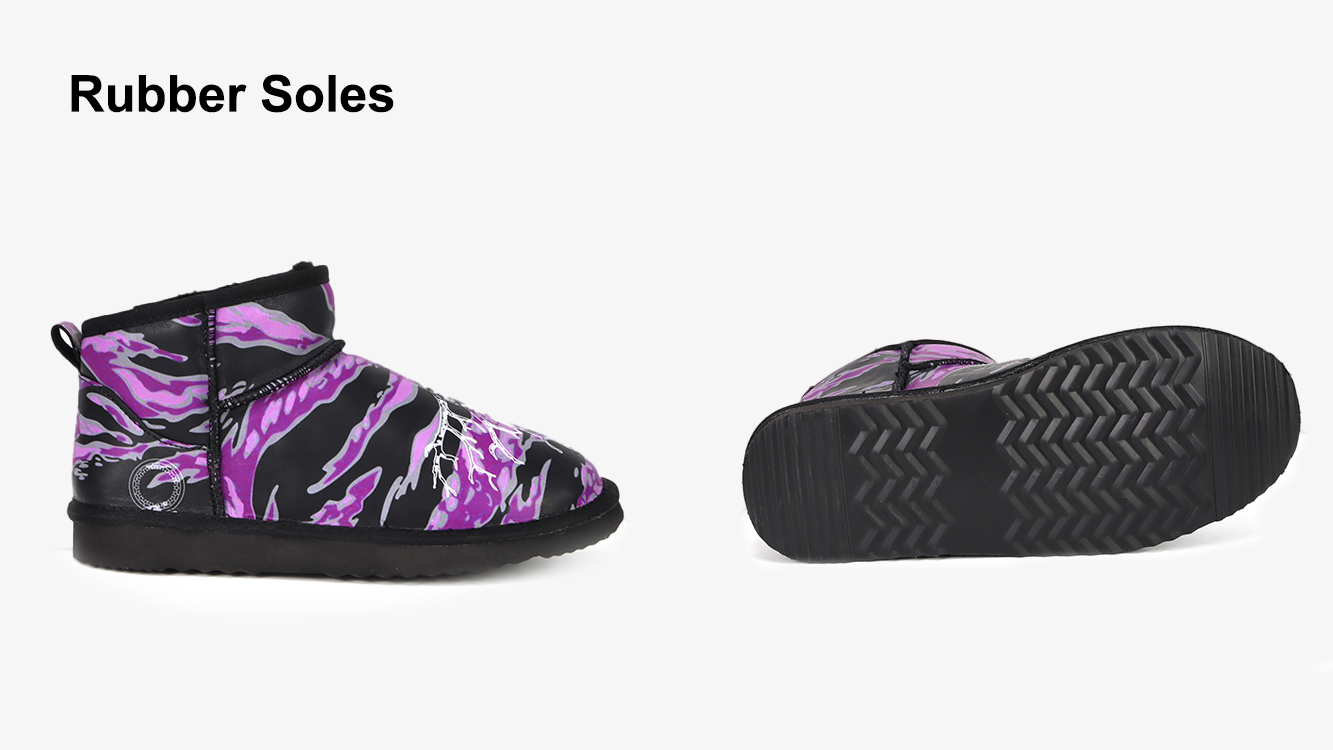
Rubber4 is strong and durable—but it’s not for everyone.
Rubber soles4 are heavy, durable, and water-resistant. They are perfect for outdoor slippers or brands focused on sustainability and premium feel.
Rubber lasts longer than EVA and TPR. It’s ideal for outdoor or multi-use slippers. But it's heavier, which adds to shipping cost. Also, molds for rubber soles are more expensive, so the upfront cost is higher.
I had a New Zealand client who needed wool slippers with a solid outdoor sole. We chose rubber because it handled their wet winters well—and their local customers expected high durability.
| Feature | Rubber Sole |
|---|---|
| Comfort | Moderate |
| Weight | Heavy |
| Flexibility | Low to Medium |
| Durability | Excellent |
| Cost | High |
Go with rubber if your slippers are meant to last and handle rough conditions.
What about PVC soles—are they still used?
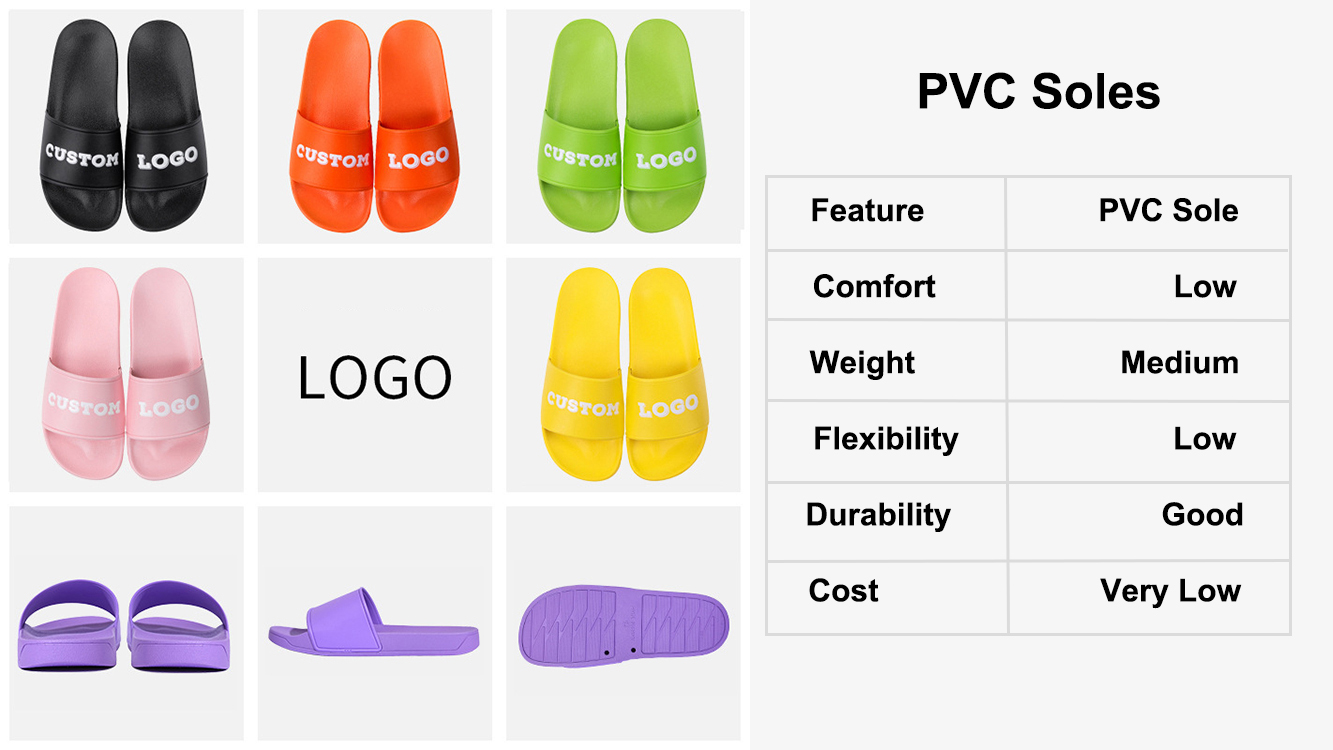
Some clients ask if PVC3 is outdated. It depends.
PVC (Polyvinyl Chloride)3 is cheap and water-resistant, but less comfortable. It’s sometimes used in budget or novelty slippers.
PVC can feel hard under the feet, and it doesn’t flex as well. But it’s durable and handles moisture well, which is why some brands still use it for waterproof slippers or low-price gift items.
One online brand I worked with used PVC for their novelty holiday slipper line. It saved costs and matched the limited-use nature of the product.
| Feature | PVC Sole |
|---|---|
| Comfort | Low |
| Weight | Medium |
| Flexibility | Low |
| Durability | Good |
| Cost | Very Low |
PVC is okay for low-budget, seasonal, or decorative designs—but not for premium comfort.
How do I choose the right sole for my slipper design?
You don’t need to be a material expert to make a smart choice.
Think about your customer, where they wear the slippers, and your price range. Match the sole material5 to your product’s purpose.
Here’s how I usually guide my clients through the decision:
| Your Focus | Recommended Sole |
|---|---|
| Indoor comfort | EVA |
| Outdoor-ready / long wear | Rubber |
| Balanced performance & price | TPR |
| Low-cost / novelty items | PVC |
If you’re still unsure, I often send material samples to help you feel the difference. Testing with your target customers is also a smart move before a full production run.
Conclusion
Choose the sole that fits your slipper’s purpose—comfort, price, or durability—not just the material name.
Footnotes
-
EVA (Ethylene Vinyl Acetate) is a lightweight, soft, and shock-absorbing foam often used in slipper soles. [Query for Google: What is EVA material in footwear?] ↩ ↩
-
TPR (Thermoplastic Rubber) offers a balance of flexibility and durability, ideal for structured slipper soles. [Query for Google: What is TPR material in shoes?] ↩ ↩ ↩
-
PVC (Polyvinyl Chloride) is a low-cost, water-resistant plastic used in some budget slipper soles. [Query for Google: Is PVC good for shoe soles?] ↩ ↩ ↩
-
Rubber is a natural or synthetic material known for high durability, water resistance, and slip resistance. [Query for Google: Benefits of rubber soles for shoes] ↩ ↩ ↩
-
Knowing how each sole material affects comfort, durability, and cost helps you align product features with your target market. [Query for Google: How to choose sole material for slippers?] ↩

